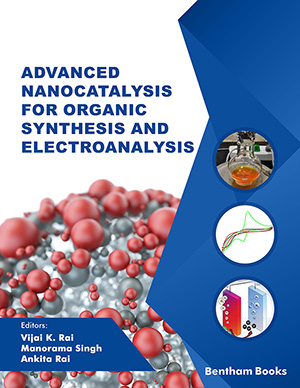
Abstract
Saponins are ubiquitous plant natural products, essentially involved in plant defense against biotic stresses, with numerous pharmaceutical and agricultural applications. The common precursor for triterpenoid saponins is squalene (30 carbon molecule) which, via cationic intermediates, is oxidized to 2,3-oxidosqualene. After cyclization, the basic triterpenoid cyclic structure undergoes oxidation by monoxygenases and glycosylations of hydroxyl groups. Chemical synthesis of saponins essentially recapitulates the main biosynthetic steps. However, to date, plants are the most viable source of these molecules. Jasmonic or salicylic acid, as well as their respective methylated derivatives, are important signaling molecules in the responses culminating in triterpenoid saponin production. The current challenges to improve triterpenoid saponin production include a better understanding of the signal transduction pathways leading to their accumulation (with emphasis on late enzymes and “master” regulatory transcription factors), isolation and heterologous expression of biosynthetic genes, and structural and modeling studies of biosynthetic enzymes and their catalytic mechanisms.
Keywords: Biosynthesis, elicitor, enzymes, gene expression, signal transduction, triterpenoid saponins.
Mini-Reviews in Organic Chemistry
Title:Biosynthesis of Plant Triterpenoid Saponins: Genes, Enzymes and their Regulation
Volume: 11 Issue: 3
Author(s): Anna C.A. Yendo, Farnanda de Costa, Cibele T. Da Costa, Luana C. Colling, Grace Gosmann and Arthur G. Fett-Neto
Affiliation:
Keywords: Biosynthesis, elicitor, enzymes, gene expression, signal transduction, triterpenoid saponins.
Abstract: Saponins are ubiquitous plant natural products, essentially involved in plant defense against biotic stresses, with numerous pharmaceutical and agricultural applications. The common precursor for triterpenoid saponins is squalene (30 carbon molecule) which, via cationic intermediates, is oxidized to 2,3-oxidosqualene. After cyclization, the basic triterpenoid cyclic structure undergoes oxidation by monoxygenases and glycosylations of hydroxyl groups. Chemical synthesis of saponins essentially recapitulates the main biosynthetic steps. However, to date, plants are the most viable source of these molecules. Jasmonic or salicylic acid, as well as their respective methylated derivatives, are important signaling molecules in the responses culminating in triterpenoid saponin production. The current challenges to improve triterpenoid saponin production include a better understanding of the signal transduction pathways leading to their accumulation (with emphasis on late enzymes and “master” regulatory transcription factors), isolation and heterologous expression of biosynthetic genes, and structural and modeling studies of biosynthetic enzymes and their catalytic mechanisms.
Export Options
About this article
Cite this article as:
Yendo C.A. Anna, Costa de Farnanda, Costa T. Da Cibele, Colling C. Luana, Gosmann Grace and Fett-Neto G. Arthur, Biosynthesis of Plant Triterpenoid Saponins: Genes, Enzymes and their Regulation, Mini-Reviews in Organic Chemistry 2014; 11 (3) . https://dx.doi.org/10.2174/1570193X1103140915111425
| DOI https://dx.doi.org/10.2174/1570193X1103140915111425 |
Print ISSN 1570-193X |
| Publisher Name Bentham Science Publisher |
Online ISSN 1875-6298 |
Call for Papers in Thematic Issues
Active Alkaloids: Structure, Mechanism of Action, Chemical Synthesis, and Biosynthesis
The scope of this topic encompasses the structure, mechanism of action, chemical synthesis, and biosynthesis of active alkaloids. Alkaloids, a class of nitrogen-containing organic compounds with alkaline properties, originate from a diverse array of sources. Many alkaloids exhibit significant biological activities and serve as key constituents in numerous medicinal plants. ...read more
Advancement in Petroleum Geochemistry
The scope of the thematic issue on advancements in petroleum geochemistry encompasses a broad range of cutting-edge research and technological innovations. This issue aims to highlight the latest developments in understanding the chemical and physical properties of petroleum and its geological formations. Key areas of focus include: Unconventional Resources: Exploring ...read more
Advancements in Synthesis of Bioactive Compounds
This thematic issue focuses on elucidating advanced synthetic strategies for bioactive compounds, with the primary objective of deepening understanding of the rational design and construction of target molecules. The exploration encompasses a diverse range of techniques, established name reactions, and cutting-edge synthetic methodologies. Specifically, the issue delves into the synthesis ...read more
Advances in Sustainable Synthesis and Applications of Cyclic Carbonates: From Green Chemistry to Advanced Materials
Cyclic carbonates have become a focus of attention because of their potential in sustainable chemistry, energy solutions, and advanced materials. Recent breakthroughs in their synthesis emphasize the use of CO₂ as a renewable feedstock, which is a step toward reducing carbon emissions. New catalytic processes, including both traditional metal catalysts ...read more
Related Journals
 55
55
- Author Guidelines
- Graphical Abstracts
- Fabricating and Stating False Information
- Research Misconduct
- Post Publication Discussions and Corrections
- Publishing Ethics and Rectitude
- Increase Visibility of Your Article
- Archiving Policies
- Peer Review Workflow
- Order Your Article Before Print
- Promote Your Article
- Manuscript Transfer Facility
- Editorial Policies
- Allegations from Whistleblowers
Related Articles
-
Challenging Treatment-Resistant Major Depressive Disorder: A Roadmap for Improved Therapeutics
Current Neuropharmacology Microglia in Alzheimer’s Disease
Current Alzheimer Research Aneuploidy-Inducing Mutations in Mitotic Checkpoint Protein hMad1-Carboxi Terminal Domain Analyzed by SAR and Computational Mutagenesis
Current Proteomics Autophagy Fails to Alter Withaferin A-Mediated Lethality in Human Breast Cancer Cells
Current Cancer Drug Targets Neutrophils as Sentinel Cells of the Immune System: A Role of the MPO-halide-system in Innate and Adaptive Immunity
Current Medicinal Chemistry Psychiatric Disorders and TRP Channels: Focus on Psychotropic Drugs
Current Neuropharmacology Newer Avenues for the Treatment of Leptomeningeal Carcinomatosis
Central Nervous System Agents in Medicinal Chemistry Discovery of <i>Channa Striata</i> Extracts as Regenerative Medicine in Promoting Wound Healing and Scarless Skin Regeneration
The Natural Products Journal Management of Impulse Control Disorders with Subthalamic Nucleus Deep Brain Stimulation in Parkinson’s Disease
CNS & Neurological Disorders - Drug Targets OMEGA-3 Interventions in Alcohol Dependence and Related Outcomes: A Systematic Review and Propositions
Current Neuropharmacology Towards A Multimodal Treatment of Depression: A Minireview on the Potential Role of Antibiotics
Mini-Reviews in Medicinal Chemistry Gender Differences in the Treatment of Ischemic Heart Disease
Current Pharmaceutical Design Retinoids as Differentiating Agents in Oncology: A Network of Interactions with Intracellular Pathways as the Basis for Rational Therapeutic Combinations
Current Pharmaceutical Design Therapeutic Approach to Multiple Sclerosis by Novel Oral Drugs
Recent Patents on Inflammation & Allergy Drug Discovery Metabolomics Analysis for Biomarker Discovery: Advances and Challenges
Current Medicinal Chemistry HDAC Inhibitors-New Generation of Target Specific Treatment
Mini-Reviews in Medicinal Chemistry mGluR5 Positive and Negative Allosteric Modulators Differentially Affect Dendritic Spine Density and Morphology in the Prefrontal Cortex
CNS & Neurological Disorders - Drug Targets Novel Anticancer Dimeric Naphthoquinones from <i>Diospyros lotus</i> having Anti- Tumor, Anti-Inflammatory and Multidrug Resistance Reversal Potential: <i>In Vitro, In Vivo</i> and <i>In Silico</i> Evidence
Anti-Cancer Agents in Medicinal Chemistry A Review on Hematopoietic Stem Cell Treatment for Epilepsy
CNS & Neurological Disorders - Drug Targets Methods for Mining Single Nucleotide Polymorphism Data of Complex Diseases
Current Bioinformatics






















